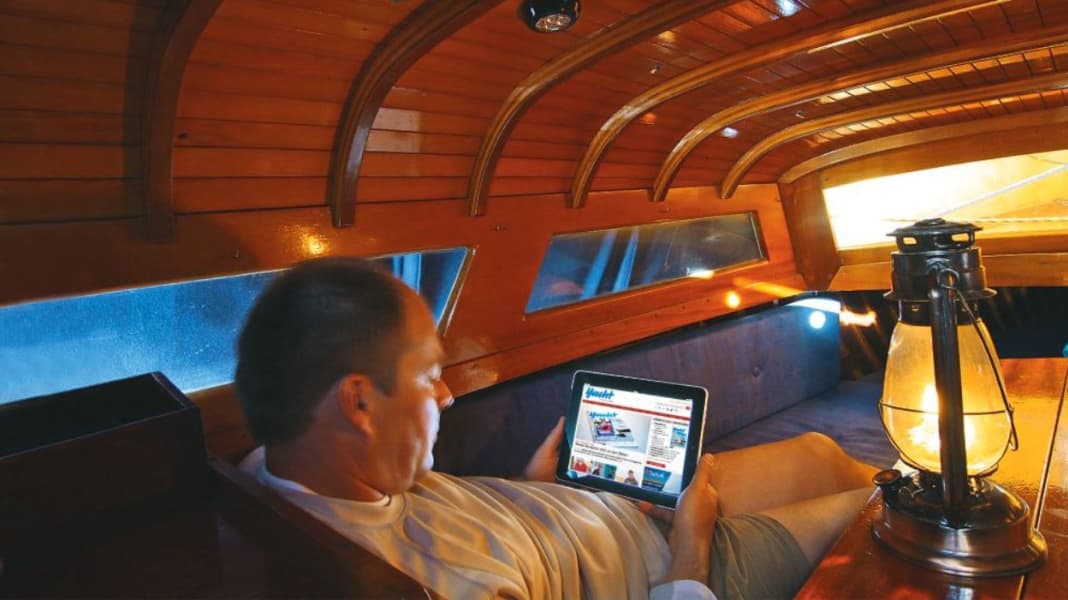
Internet in the harbour
It wasn't so long ago that well-functioning, free Internet seemed to be the norm in European marinas. In fact, today it is the exception rather than the rule and where it does work, it is usually hopelessly overloaded. When searching for available networks in harbours, it is therefore becoming increasingly common to come across boat names that conceal an on-board Wi-Fi network. Installing one is not rocket science. But the plethora of options is confusing.
However, anyone who needs a reliable network for working is rarely well served by the harbour Wi-Fi. Even if the connection is stable, the bandwidth is barely sufficient for smooth video conferencing because you are sharing the connection with too many users. Thanks to well-developed LTE and, in some cases, 5G networks, a mobile phone connection in many coastal areas is faster and more stable than the marina's service. At least if you have a corresponding contract or the right local prepaid card.
Internet and communication on the high seas
However, mobile phone networks quickly become weaker the further you get from the coast. As soon as the ship leaves the transmission range of the mobile phone masts, the crew will have no choice but to think about further communication options. Then the systems that hover above you in their orbit come into question as transmitting and receiving stations: the satellites.
Until a few years ago, there were only a few affordable satellite phones, which were also only developed for use in the desert and quickly lost contact at sea without a self-tracking antenna. Then came the first satellite mobile phones, which, with the dimensions of a "portable phone box", the menu navigation of a 90s mobile phone and their robust appearance, had a certain expedition character.
Today, communication on long sea routes has become much easier - and navigation is much safer thanks to completely intuitive, affordable technology, as the crew can call up weather reports as small, packaged grib files at any time and several times a day. Data connections have also become faster and more reliable. Inmarsat and Iridium in particular, as well as the offshoot Iridium certus, have established themselves in the field of satellite communication for sailors. Starlink has recently become another strong provider.
The classic: Radio via VHF or PMR
Admittedly, the majority of everyday communication on board now takes place by telephone. Nevertheless, a VHF radio on board is still justified and remains an important part of the safety equipment.
In an emergency, you can send out a call for help and position at the touch of a button and then speak to all units involved in the rescue, radio the freighter on a collision course - VHF is and remains the direct contact to other ships and yachts, even without a telephone number. Thanks to AIS and MMSI, targeted enquiries are also possible within a radius of up to 30 nautical miles.
Anyone travelling in the Mediterranean knows that it's better not to contact marineros and petrol stations by phone, because someone has to answer first. In the high season, you often wait in vain. The radio, on the other hand, is almost always in listening mode.
In addition to VHF, there are also PMR radios, usually called walkie talkies. These are inexpensive, often waterproof - and therefore perfect for communicating with the dinghy or the children on the beach
